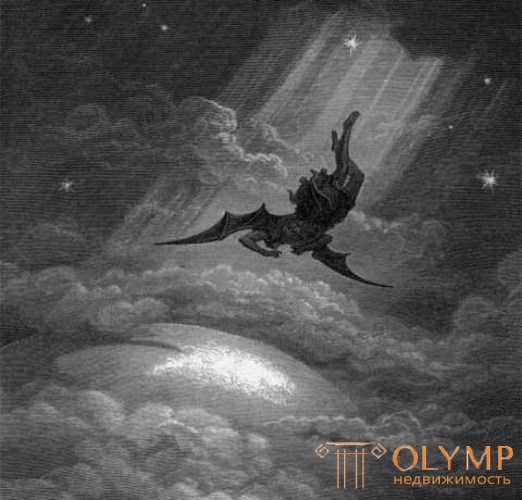
1. The formation of Upper Italian painting
As in the mountainous areas dominated by plastic form, so in the plains dominated air tone and light. The painting of the Upper Italian Plains also flourished with colorful and light charms. Leonardo, the great inventor in the field of chiaroscuro, himself a Tuscan, formed a permanent school only in upper Italy, and Fra Bartolomeo, the father of heightened sense of color, brought his coloring to unity in Florence only after visiting Venice. Namely, the general impression in the spirit of flowering was brought to unity in upper Italy, mainly due to the inspired unity of hot colors like Giorgione and Titian, full of shining light and shade like Correggio, or by painting in general tone like Tintoretto, who gave art brushes new expressiveness in that it dissolved the tone (local tone) peculiar to each thing into light and shadow ratios.
Painting of local origin in upper Italy falls in the sixteenth century in our descendants into three main areas. The first one embraces its own Lombardy and Piedmont. To the second belongs to Venice with all the area lying near her. The third stretches from Parma and Ferrara to Bologna. Then the middle Italian plantations are Mantua, owned by Giulio Romano, and Genoa - Perino del Vaga. But by the end of the century, even the most independent Upper Italian schools could not completely protect themselves from the influences of Tuscan and Roman manners; as opposition arose, first of all in Bologna, this new middle style of the 17th century, which Venice had the most resistance to.
In Milan, all of Lombardy and Piedmont, the native schools were sharp and dry for a long time in the 16th century, if they did not follow Bramante and Leonardo. The already mentioned Bartolommeo Suardi (from 1468 almost to 1536), nicknamed Bramantino, the main pupil of Leonardo, as Suida and Fritzoni showed, began with Boutinone’s gray sharpness, but later found himself in Leonardo’s bright circle, but always remaining a real Lombardi had a strong influence on the further development of painting in these areas. The real ruler was still Leonardo, who formed a number of students in his first Milan workshop, which he, as we insist against Herrera, occasionally called the “Academy”. The works of these younger artists were mixed with his own, in a period of insufficient criticism. His early beloved disciple Andrea Salai (Salaino), whom Vasari calls only his “burshem” (creato), and his main late pet, Francesco Melzi, mentioned Lomazzo only as a miniaturist, did not preserve authentic paintings. Ambrogio Preda or de'Predis, to whom we attribute, together with Seidlitz and others, the Madonna Litta in the Hermitage in St. Petersburg and the Ascension of the Lord of the Berlin Museum, was temporarily under his influence.
The real students of Leonardo’s first Milan time are Antonio Boltraffio (1467–1516) and Marco d'Ojoonno (1470–1530). Only their Vasari and calls the students (discepoli) master. Boltraffio, thoroughly studied by Carotti, discovers in his early Berlin Madonna the echoes of Borgognone, though he is adjacent to Leonardo. Only externally adjacent to Leonardo are his carefully written out, shining with the merging of Madonna's colors in the Budapest Gallery, in the Palace Museum and in the Poldi-Pezzoli collection in Milan. His independent further development, in which, with all the sense of beauty, things could not do without blunders and harshness in the language of forms and colors, speaks for itself, in its Mother of God with saints and ktitori in the Louvre, in the feminine Madonna of the London National Gallery and in its fresco Madonna ktitorom in Sant Onofrio in Rome. His main strength was manifested in the newly flourishing art of decorating rooms with easel paintings.

Fig. 43. "The Fall of Lucifer"
The signature of Mark d'Odzhonno carries the “Fall of Lucifer” in Brera, for all its strength, dryly written, and the expression-full altar in the Crespi collection in Milan; Vasari mentions his frescoes from Santa Maria della Pace, stored in Brera. It is characterized by its lack of flexibility, bony hands, zigzags in the folds of clothes, thick shadows and harsh lights. The paint-removing styling and the gentle sfumato by Leonardo are also absent.
Leonardo himself calls his real late-disciple Dzhampetrino, Giovanni Pietro Rizzo himself. He is credited with primarily a series of dry in drawing and dark in color, but fanned by the charm of the submissive smile of female belt figures, such as Magdalen in Brera and in the Castle Museum, then Flora in the Borromean Palace in Milan. Morelli joins them to the Hermitage's Columbine in St. Petersburg, and Pauli Magdalene's Dr. Lurman in Bremen.
However, the three most important masters of the heyday, who grew into independent values in the light of Bramantino and Leonardo, were Andrea Solari (Solario), Bernardino Luini and Gaudenzio Ferrari, natives of old Lombardy.
A very extensive and happiest activity in the field of great church art was developed by Bernardino Luini (approximately 1475–1531 or 1532) from Luino and Gaudenzio (Vinci) Ferrari (1481–1546) from Valdugia. The first was studied by Brun, Fritzzoni, Beltrami and others, and the second by Colombo, Edita Galsay, Pauli, Fritzzoni, Marazza and Malaguzzi. In his early frescoes, Luini clearly adjoins the semi-related style of Borgognone. These are: “The Adoration of the Magi” in San Pietro near Luino, removed from the walls of the Pelucca villa near Monza, are religious and mythological frescoes, of which “The Volcano Forge” in the Louvre and the famous “The Coffin of St. Catherine's soaring angels "in Brera. Such are his early easel paintings, such as “The Position in the Tomb of Christ” in Santa Maria della Passion in Milan, wrongly suspected by Williamson. That he was of middle age (1510–1520), next to Bramantino, sought to more closely side with the mature art of Leonardo, show his frescoes from Santa Maria della Pace in Brera, as well as numerous easel paintings, such as: “Christ among the teachers” in London The National Gallery, “Vanity and Modesty” by Baron Edmond Rothschild in Paris, “The Angel with Tobias” in Ambrosian and the beautiful “Madonna in the Rose Arbor” in Brera. These pictures with calm, harmonious beauty of lines and colors convey, however, the language of forms and the style of Leonardo's writing only in general and weakly. In the last years of his life, never forgetting Leonardo, Luini developed his own style, which was not akin to his personal experiences, but was distinguished by freedom and purity of form, light harmony of colors and a pleasant expression; He is thus in his illustrious frescoes of the church of pilgrims in Saronno and in Santa Maria degli Angeli in Lugano, as well as in the fresco Madonna (1521) in Brera, in the powerful fresco painting "Christ in the Crown of Thorns" (1522) in Ambrosian, and especially brightly in his three altar paintings (1526) in the cathedral of the city of Como.
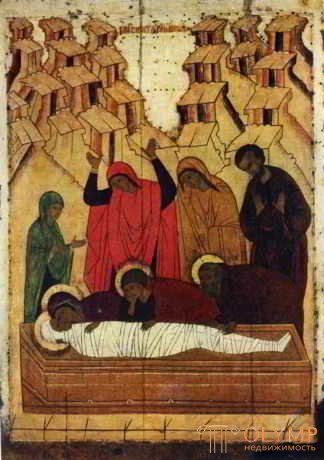
Fig. 44. "The position in the tomb of Christ"
2. Creativity Gaudenzio Ferrari
Stronger, brighter, with greater love for the truth came the monk Gaudenzio Ferrari, who received his initial training in Vercelli from Makrino d'Alba, with whom Fleres introduced us closer. In Milan, having got into the Leonardo Current thanks to Bramantino and Luini, he, according to the old opinion, newly adopted by Pauli against Morelli, also studies the works of Perugino. In the end, he developed into a master who can tell with full strength and admiration of pure beauty, in whose works angular and perfect, sharp and gentle, light and shade and joyful play of colors are found side by side, sometimes almost in an uneven form. Since 1507 he wrote on Holy Mountain near Varallo. What a Umbrian innocent and benevolent impression is made here of pictures from the Savior’s childhood in Santa Maria delle Grazie! How fresh and natural is his series of the Passion of the Lord in 1513 with the Crucifix in the middle! How much power in his Kalwarii 1523, similar to the panorama of terracotta figures, complemented by a fresco! But the most magnificent creatures of Gaudenzio include frescoes from the life of Mary and Magdalene in San Cristoforo (1532–1538) in Vercelli, and the most magnificent angels in the dome of Santa Maria dei Miracoli in Saronno, breathing power and life and filled with endless glee. It is the first integral dome painting of this school. In addition, his last frescoes, the Flossing and the Crucifixion of 1542 in Santa Maria delle Grazie in Milan, testify that he continuously strove for the great and holy. His easel paintings - almost exclusively altarpiece. Adorable, worshiping her baby Madonna of 1511 in the main church of Arona was inspired by the picture of Perugino of the London Gallery, then located in Chertosa in Pavia. The high altar of 1515 in San Gaudenzio in Novara is only half imbued with Umbrian tenderness. The highest power is shown by the altar filled with light in San Cristoforo in Vercelli. Pinacoteca in Turin and Brera in Milan are also rich in works of his strong and gentle hands.
For the course of development of Luini and Gaudenzio, it is noteworthy that they, before the spirit of Leonardo dawned on them, butchered the surroundings of their paintings with real gold or with a relief knockout pad. Their successors, however, as the son of Luini Aurelio (died in 1593) and the pupil of Gaudenzio Bernardino Lanini (died about 1578), dropped the Lombard school to Mannerism, which played with all the techniques of painting the time of decline.
In Genoa, where Pierfrancesco Sacchi from Pavia transferred 15th century dapper realism (the Altar of the Three Saints in 1426 in Santa Maria di Castello) to cinquecento, now appeared in the person of Luke Cambiazo (1527–1585, according to Soprani) a peculiar, powerful master who speaks natural the language of forms, observing the broad manifestations of light and shadow. Already a large "Position in the tomb" in Santa Maria di Carignano and his own portrait in the Palace of Spinola in Genoa, representing his writing portrait of his father, put him in a row of significant masters.
3. Venetian painting
In Venice, painting of high renaissance revealed its richest beauty, forms and luxury of its rich colors. If its forms, preferring not muscles, but a blooming body, are sometimes deprived of the anatomical correctness of Florentine art, yet they always appear in beautiful lines from the waves of colors washing them. Venetian painting usually cared less about the depiction of actions expressed in movements than about the transfer of a beautiful, self-confident human being. Her religious paintings are heavenly bliss in the form of the purest earthly happiness. Her secular paintings, inspired by poetry, open up new worlds of sensual and magical supersensual life. However, her full of life portraits, perpetuating her monetary and mental aristocracy, are complemented by perfect portraits or half-portraits, as Scheffer called them, who seek only for the exaltation of human beauty in hot colors.
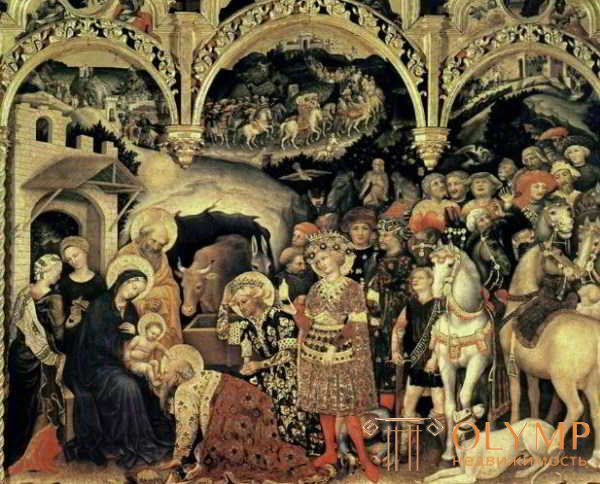
Fig. 45. "The Adoration of the Magi" London Gallery
The undoubted works of Giorgione of an earlier time we include not only the beautiful Judith in Petersburg, standing, leaning on a sword, in a strict posture, but also the whole Alendal group of paintings, so named by Yusti from Lord Alendall's painting “Adoration of the Magi”, remarkable for its deep mood. To this group belong: the “Adoration of the Magi” and the so-called “Throne Scene” of the London National Gallery, two paintings from the history of Moses and Solomon in the Uffizi and the Holy Family in the Benson collection in London. The quiet Madonna with saints Anthony and Roch in Madrid is also still close to the master's early paintings. Only baby Christ and sv. The roch is more changed in the movements. From the late paintings of the master Dresden Venus and the Olympic-idyllic “Rural Concert” in the Louvre have already been mentioned. На почве этого концерта стоит «Прелюбодейная жена» Корпоративной галереи в Глазго и Мадонна со святыми (полуфигуры) в Лувре. Больше всего движения в Суде Соломона в Кингстон-Лэсси. Обе указанные последние картины, несмотря на некоторые сомнения, можно зачислить за Джорджоне. Из тех же картин, которые приписываются то Джорджоне, то Тициану в юности, как то: прекрасную с поясными фигурами картину в палаццо Питти, духовных лиц, занимающихся музыкой, мы могли бы оставить мастеру Кастельфранко. Все вещи Джорджоне проникают в нашу душу, точно музыка.
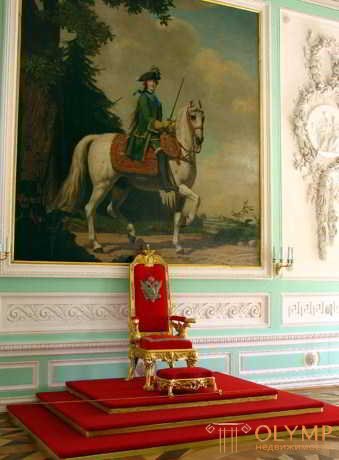
Fig. 46. «Тронная сцена» лондонской Национальной галереи
4. Работы Пальма Веккио
5. Painting of Titian
The most powerful artistic person between the students of Bellini was Tiziano Vecellio from Cadore, who was born, apparently, not in 1477, and later, according to Cook, only in 1489, and who died in 1576 in Venice. General reviews of his activities were given by Crowe and Cavalcazelle, Philips, Gronau and Fishel. If he did not live to 99 years, but only to 87, then his work becomes clearer in its development.
Titian belongs to the greatest of the greats. He merged in the inseparable unity of the real and the ideal, forms and burning paints. He was equally available lyrics and drama, dreamlike dreams and powerful actions. Set up on earthly and secular, he expressed his highest beginning, perhaps in the field of portrait and in the combination of magnificent landscapes with pure human beauty. Nevertheless, he revived his religious images, which, however, were half of his works, with pure, ardent humanity and sublime, tender divinity. He grasped all the secrets of painting, like no other painter before him, and painters of all subsequent times went to school with him. Even his artistic development has become exemplary. His later works differ from earlier ones by strengthening the motives of bodily movements in them and by the enormous freedom of writing. From the perfection of the luminous, fused color, they gradually moved to the freedom and breadth of performance and to the complex in tones, but with a single color of light and shade, which paved the way for a new way of pictorially seeing and writing.
The earliest surviving works of Titian are similar to the works of Giorgione, who attracted him in 1508 as an employee to decorate a German trading house in Venice. Based on ancient testimonies, we consider it proved that such magnificently executed Giorgione works, such as the adorable “Gypsy Madonna” of the Vienna Gallery, the strict female portrait of the Crespi gallery in Milan, represent Titian's youthful works.
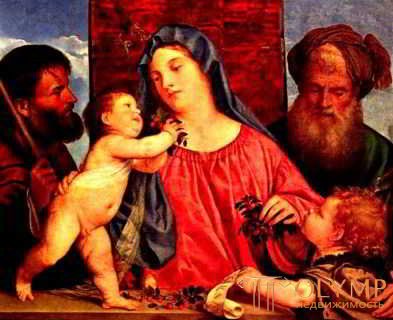
Fig. 47. "Madonna of Cherries" of the Vienna Gallery.
Titian himself is in the Caesar Dinarius of the Dresden Gallery. Only half-figures of the Savior and Pharisee with speaking features and hands, on a black background! Titian's type of Savior, surrounded by nimbus lights, in its ideal expression. Moreover, how much truth, naturalness, how much immediate life in these heads!
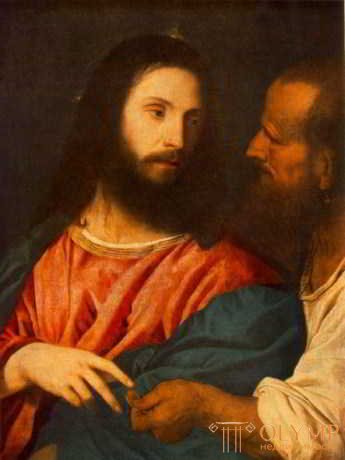
Fig. 48. “Dinarius Caesar” Dresden Gallery
The earliest creatures of Titian belong to the luxurious in colors, tranquil picture of the Antwerp Gallery, representing Doge Zhakopo Pesaro with Pope Alexander VI, kneeling before the steps of the throne ap. Petra. Fifty years later (in 1555) a picture emerged in the Doge's Palace, sustained in a colder tone, imbued with a more pleasant light and deliberately more allegorical, representing Doge Grimani, kneeling before the figure of Faith. Changing the style of Titian lies entirely between these two internally related paintings.
Titian’s ability to tell with dramatic power was most powerfully manifested in his breathtaking “Tombstone” of the Louvre, in the “Killing of Peter the Martyr” (1528) in Santi Giovanni de Paolo that burned down in Venice and destroyed in fire in 1577 along with other works of art in the frescoes of the “Battle of Cadore” (1537) in the Doge’s Palace. Titian's participation in decorating the interior in a luxurious form appears before us in his “Entry into the Temple” from “Scuola della Carita”, now at the Venice Academy. The highest charm of the landscape breathe "Noli me tangere" of the London Gallery (1512) and St. Jerome Louvre (1538). It can even be said that his landscape with a flock of sheep in Buckingham Palace (circa 1534) opens up new paths, like an undoubted landscape with a mood. Titian owned equally all kinds and all means of representation, and in all his painting, paint, as such, remained the most peculiar means of expression.
6. Creativity Marconi and Kariani
Alvise Vivarini’s school, which contrasted Bellini’s school, emerged, however, as Berenson showed, such a great master as the Venetian Lorenzo Lotto (from 1480 to 1556 or 1557), like many of his compatriots, was looking for happiness outside his hometown of the Lagunas. Following Berenson’s book on Lotto and Biscaro, he rightfully recognized Lotto’s youthful works in frescoes and other paintings incorrectly attributed to Morelli Barbari. His credible youthful works, for example, the altars in Santa Cristina in Treviso and in the Town Hall in Recanati, differ from the works of Bellini’s pupils by cooler light and shade and a more naive manifestation of life. Between 1508 and 1512 Lotto was in Rome. It is not surprising that he also took on the echoes of the Roman language of forms, so his Madonna in 1518 in the Dresden Gallery, first attributed to him by Fritzzoni, was long considered a painting of the Roman school. Between 1513 and 1525 in Bergamo, he performed beautiful internally and externally vivid, covered with bright light and cool shadow of the altars in San Bartolomeo, San Bernardino and San Spirito resembling rather Correggio, whom he did not know than the Venetians. Since 1526, Lotto divided his time between Venice and the Marks. The works in a true Venetian spirit are his “Apotheosis of St. Nicholas "in the church Carmine (1529) and the altar from St. Anthony in Santi Giovanni e Paolo in Venice. His latest paintings: The Sacrifice of Melchizedek and The Presentation in the Palazzo Apostolico in Loreto, with a clever design and a wide, light performance, are written in a general tone with delicate colorful tints. Exaggerating, Berenson compares them with the works of the best French “impressionists”. Compared to the abundance of Lotto's paintings on Christian themes, his pagan plots are extremely rare, and in the famous galleries in London, Madrid, Vienna, Berlin and Milan, up to two dozen portraits survived, distinguished not so much by their spiritual depth, as by the sensitivity of psychological observation and fresh natural pictorial performance . To the best belongs a family group in London. In order to become great, Lotto lacks rigor and depth, but he is an artistic person with whom we are bound by its immediacy and attractiveness.

Fig. 49. Melchizedek Sacrifice
7. Disciples of Vecchio and Titian
Palma Vecchio, a relative of Bonifacio Pitati (1487–1533) from Verona, left the school. The archival research of Ludwig, to which Wykgoff added clever explanations, again freed us from Morellievsky, which goes back to Bernasconi’s division of this master into three, so instead of duplicates are his students. Bonifacio Pitati definitely entered the field of scenery. With some of his students, he performed after 1530, painted on canvas, wall paintings of the Palazzo de Camerlengi in Venice, numerous individual copies of which were later scattered and distributed to churches, palaces and galleries. He preferred oblong paintings in the taste of Palma and shed an abyss of shining colors on his attractive paintings, but for the most part limited himself to a beautiful appearance.
His main pupil was, as we take along with Berenson and Vikgoff, Zhakopo da Ponte from Bassano (1515–1592), whose father Francesco da Ponte the Elder, wrote still coarse Madonnas in the spirit of Bartolommeo Montagna. The most detailed information about the artistic family of Bassano gave Tsottmann. Zhakopo Bassano, already well-lit by Ridolfi and Verchi, was in his own way a pioneer of new ways, in whose hands biblical stories, mainly from the Old Testament, gradually turned into widely developed episodes from rural life with a realistic landscape, genre situation and numerous herds of livestock or any animals. His paintings of this kind can be seen in most famous collections, but in the greatest number in the galleries of Bassano and Vienna. Starting rather timidly, he moved on to a bolder and wider painting and to a sharper image of lighting effects, even night-light properties, of which individual colors, such as red and green, he makes the gems exactly glow. The golden base tone, inherited from his father, he gradually replaced the silver-gray tint. Of the sons of Jacopo, Francesco Bassano Jr. (1549–1592) closely adjoins him, and Leandro Bassano (1551–1622) was especially loved as a portrait painter, but with his soft, shrouded yellowish-gray haze “View of Venice” (in Madrid) he becomes founder of the "painting species".
The influence of Titian, mixed with elements alien to him, is in the paintings and engravings of Andrea Meldolla Sk
Что бы оставить комментарий войдите
Комментарии (0)